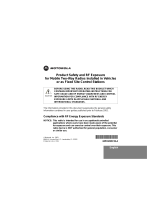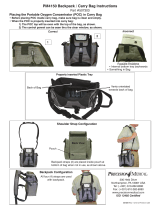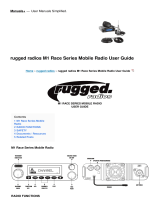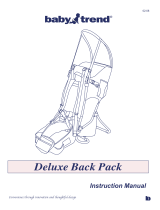
COMMERCIAL WARRANTY (STANDARD)
Motorola radio communications products are warranted to be free from defects in material
and workmanship for a period of ONE (1) YEAR, (except for crystals and channel elements
which are warranted for a period of ten (10) years) from the date of shipment. Parts,
including crystals and channel elements, will be replaced free of charge for the full
warranty period but the labor to replace detective parts will only be provided for One
Hundred-Twenty (120) days from the date of shipment. Thereafter purchaser must pay for
the labor involved in repairing the product or replacing the parts at the prevailing rates
together with any transportation charges to or from the place where warranty service is
provided. This express warranty is extended by Motorola Communications and Electronics
Inc., 1301 E. Algonquin Road, Schaumburg, Illinois 60196, to the original purchaser only,
and only to those purchasing for purpose of leasing or solely for commercial, industrial, or
governmental use.
THIS WARRANTY IS GIVEN IN LIEU OF ALL OTHER WARRANTIES EXPRESS OR
IMPLIED WHICH ARE SPECIFICALLY EXCLUDED, INCLUDING WARRANTIES OF
MERCHANTABILITY OR FITNESS FOR A PARTICULAR PURPOSE. IN NO EVENT SHALL
MOTOROLA BE LIABLE FOR INCIDENTAL OR CONSEQUENTIAL DAMAGES TO THE
FULL EXTENT SUCH MAY BE DISCLAIMED BY LAW.
In the event of a defect, malfunction or failure to conform to specifications established by
Seller, or if appropriate, to specifications accepted by Seller in writing, during the period
shown. Motorola, at its option, will either repair or replace the product or refund the
purchase price thereof, and such action on the part of Motorola shall be the full extent of
Motorola's liability hereunder.
This warranty is void if:
a. The product is used in other than its normal and customary manner.
b. The product has been subject to misuse, accident, neglect or damage.
c. Unauthorized alterations or repairs have been made, or unapproved parts used in
the equipment.
This warranty extends only to individual products, batteries are excluded, but carry their
own separate limited warranty. Because each radio system is unique, Motorola disclaims
liability for range, coverage, or operation of the system as a whole under this warranty
except by a separate written agreement signed by an officer of Motorola.
Non-Motorola manufactured products are excluded from this warranty, but subject to the
warranty provided by their manufacturers, a copy of which will be supplied to you on
specific written request.
In order to obtain performance of this warranty, purchaser must contact its Motorola
salesperson or Motorola at the address first above shown, attention Quality Assurance
Department.
This warranty applies only within the United States.























